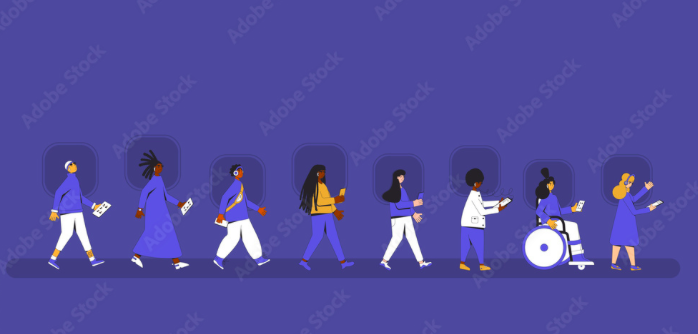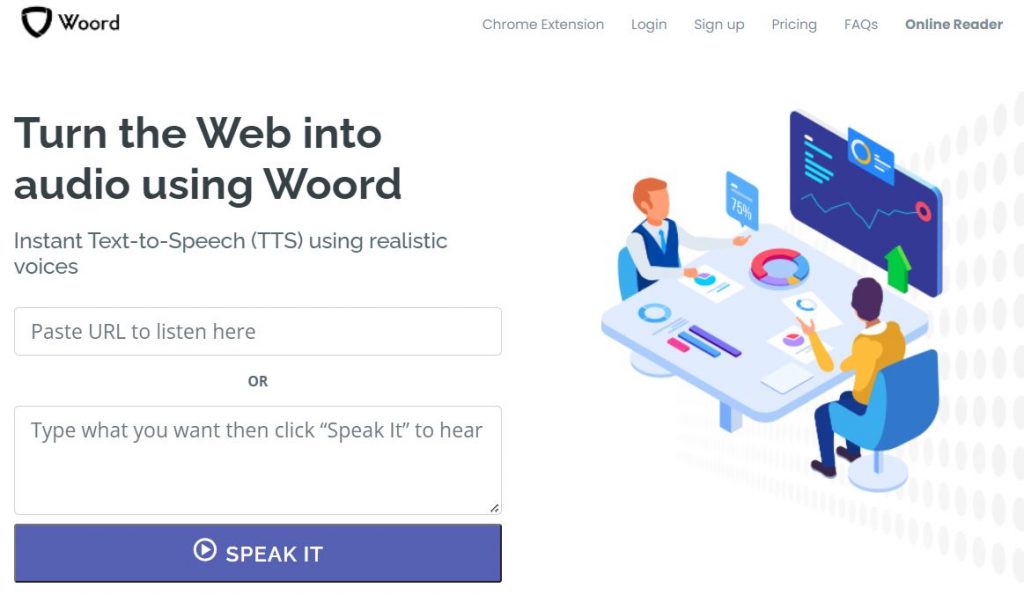Text-to-speech usage has accrued among businesses, but also for personal use. Why has it become such an appealing tool to people? We will give you an idea of voice readers’ wonders.
Mobile devices account for an increasing portion of time spent on digital content in the United States, and demand for linked devices is expanding globally. Every day, the average individual worldwide spends 6 hours and 57 minutes staring at a screen (for internet-connected activities). And the majority of that time (3 hours and 43 minutes) is spent on a smartphone. This includes 2 hours 27 minutes of social media scrolling, 1 hour 33 minutes of streaming music, and 55 minutes of podcast listening.
Nearly 7 hours with our eyes fixed on a digital device. That’s a lot. Right? It makes sense we end our day with sored eyes. However, we should also highlight that music and podcasts, i.e., audio content, have their percentage in human consumption. It isn’t shocking, though. After the world revolved around sight and touch, speech technologies –such as smart speakers and smarthomes– have risen from the shadows. According to experts, online data will soon be automatically converted to audio.

How will this conversion take place? With text to speech (TTS). This technology takes text within digital materials and transforms it into artificial lifelike discourse (yet, don’t worry! Nowadays, these voice readers resemble human speech). As a result, people can listen to any text-based content.
But this information doesn’t tell us what we want to know: Why should we use a text-to-speech voice reader? For starters, TTS aids the visually impaired, those with reading difficulties, individuals with literacy issues and persons with severe speech disabilities. Additionally, this technology benefits non-native speakers in understanding a foreign language. Not to mention people from multilingual families (where the home language is not taught at school) who want to keep or develop their ties to their homelands despite not being able to read, write, or speak the language well. Moreover, text to speech enables people to hear a news or blog post, a PDF document, or an eBook on the go or during other activities, letting them multitask and improve productivity when required.
Therefore, counting on a TTS voice reader has its advantages. So having at least one of these tools on your devices is never a bad idea. For that reason, we will recommend an AI voice generator you can have on hand to utilise whenever you need it.
Woord
Woord comprises 50 realistic voices across 28 languages (English, Spanish, Portuguese, French, German, Russian, Turkish, Hindi, Italian, Japanese, Chinese, Vietnamese, Arabic, Dutch, Norwegian, Korean, Polish, Swedish, and others), including dialects such as US, UK, and Indian English, Catalan and Mexican Spanish, Brazilian Portuguese, Canadian French, Mandarin Chinese, Hindi, and Bengali Indian.
You may also pick a male, female, or gender-neutral spokesperson using Woord. Not to mention the ability to speed up or slow down. However, that’s where customisation begins. The software enfolds an SSML editor on the platform that allows you to emphasise and whisper sentences, add pauses and breaths, and modify phonemes as needed, among others. Furthermore, you may personalise your voice device profile (like IVR, Smarthome, and GPS). On that account, users are provided with total control over their voice readers.
Besides all these features, Woord has top-of-the-line functionalities, for example, OCR technology and MP3 download. And you may choose how to employ its tools: through the website, the mobile app, the Chrome extension, or API access. In any case, you will be able to enjoy all TTS benefits. Whether it’s a plain text, pdf, txt, doc(x), pages, odt, ppt(x), ods, non-DRM epub, jpg, or png, you’ll be able to hear it.
Are you getting a text-to-speech voice reader after reading this article? We want to know!


